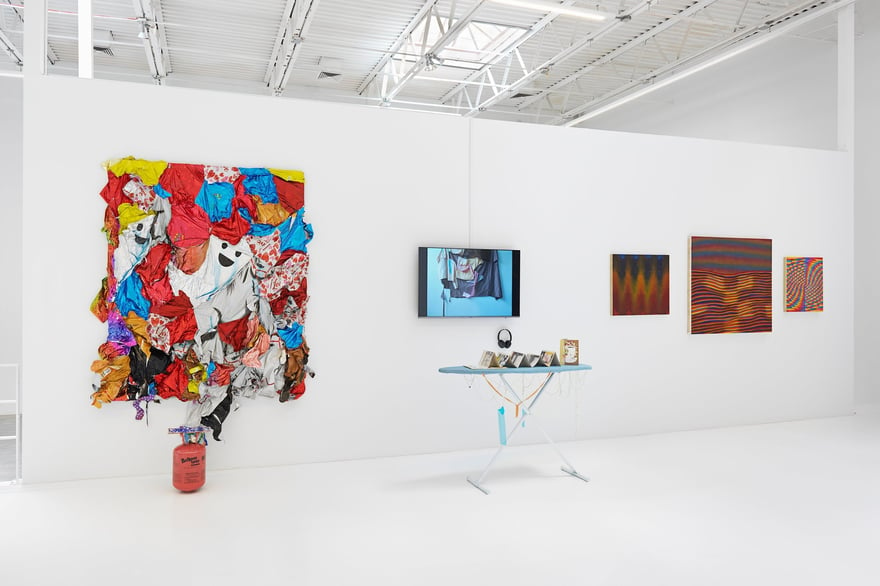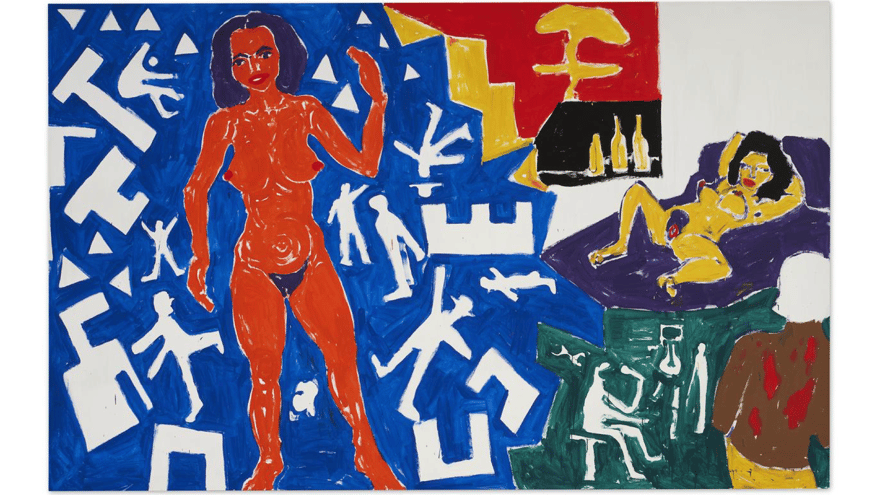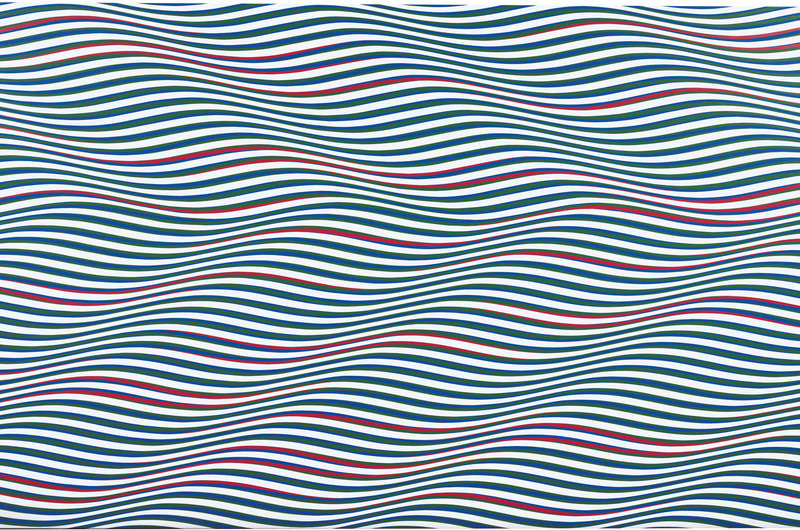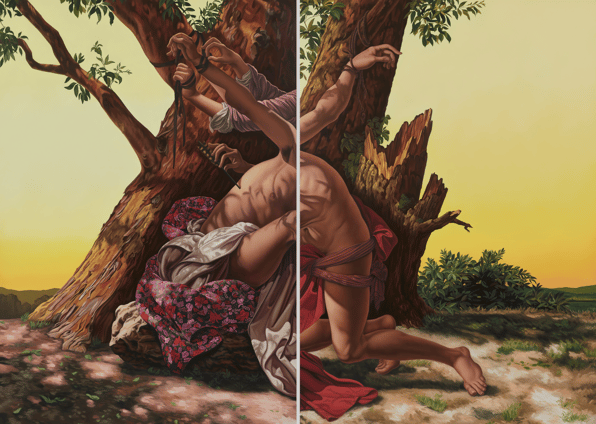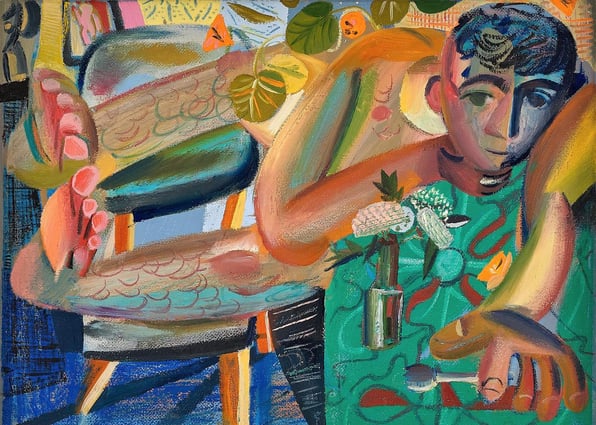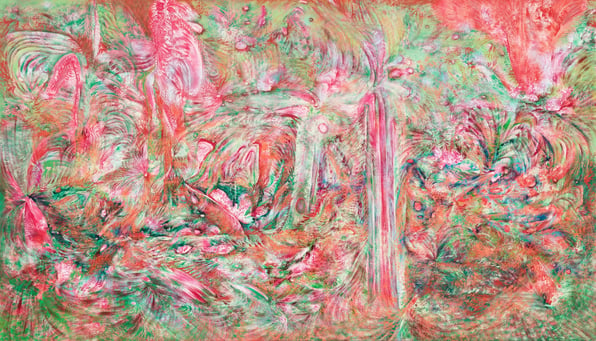A System of Seeing
At Jeffrey Deitch Gallery, Brianna Bass and Alexander Puz renew the vibrancy of Op art
In the 1964 Time magazine article credited with coining the term “Op art,” the author describes the genre as “preying and playing on the fallibility in vision.” “Man’s eyes are not windows, although he has long regarded them as such. They can be baffled, boggled and balked. They often see things that are not there and fail to see things that are. In the eyes resides man's first sense, and it is fallible.” The illusions created by the patterns on the canvas are characterized as almost sinister tricksters.
In 2022, Op art is having a moment. Bridget Riley’s 1974 painting Gala sold for a record price of $5,721,406 in March; her first American museum survey in over 20 years just closed at the Yale Center for British Art. The two most recent paintings by Victor Vasarely to sell at auction tripled their estimates. But Op art is not bound to history. Contemporary artists are working in the legacy of the genre and finding more complex interpretations of its patterns.
Closing this week at Jeffrey Deitch Gallery, Vibrant Matters curated by Melanie Kress presents a revisited iteration of the Yale MFA Painting & Printmaking 2022 Thesis Exhibition. Two artists in the presentation, Brianna Bass and Alex Puz, draw upon the aesthetics of Op art. Their work is visually quite different, to be sure, but Bass and Puz share a focus upon patterns and systems of information. No longer just a trick of the eye, Op art in a Contemporary context emphasizes gaps between the known and unknown.
Brianna Bass is a painter from Knoxville, Tennessee who creates vibrant optical illusions. In a 2020 interview, Bass explained how the relationship between music and patterns shape her practice. The 32-year-old artist is hard of hearing, and thus relies on an array of context clues to understand what people are saying. “We rely on our knowledge of predictive systems to determine, in streams of sound and movement, what has meaning.” In her paintings, Bass uses complex patterns to create her own predictive systems; then she disrupts or complicates them.
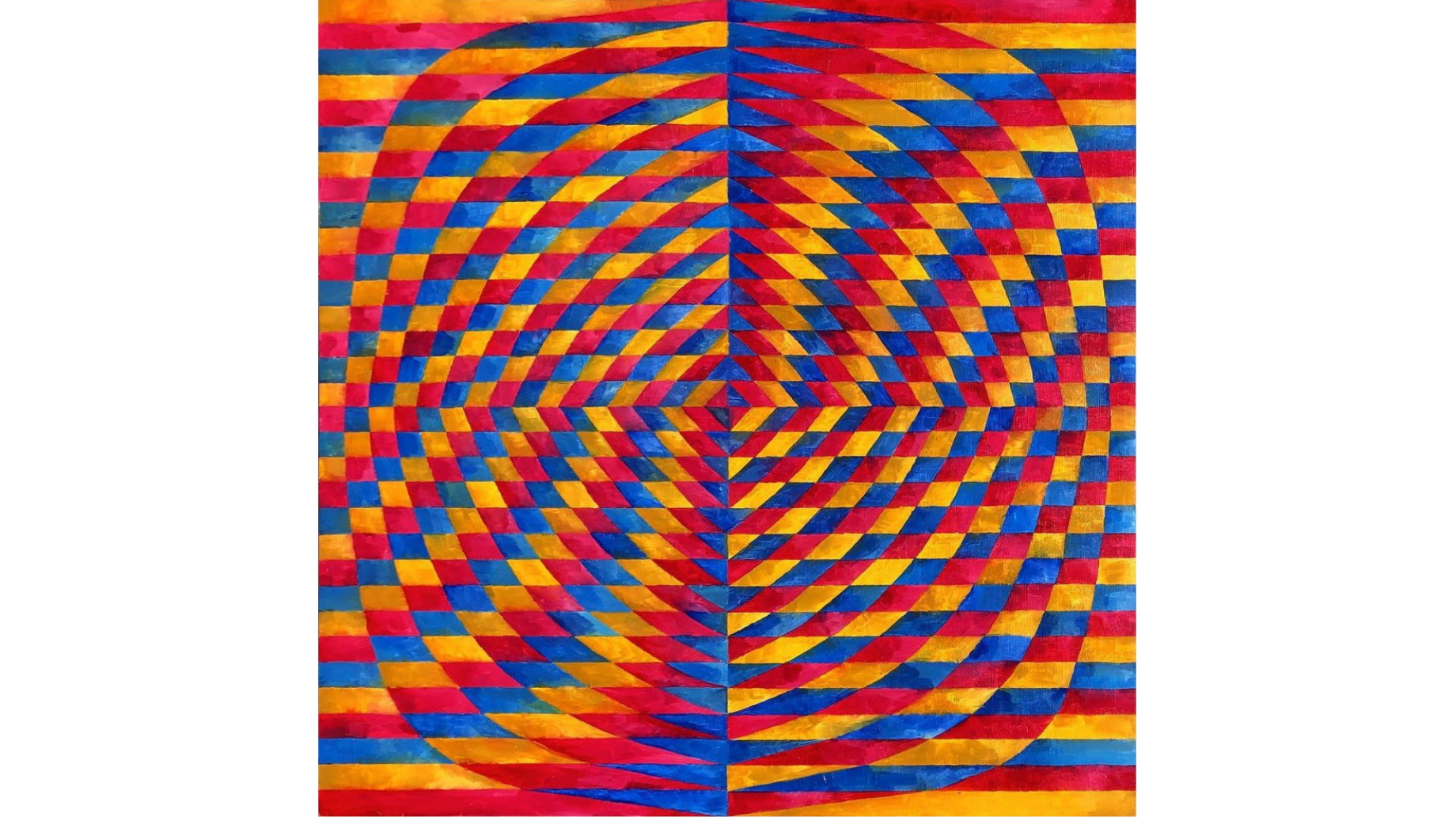
Connecting sight and sound in her work, Bass maps musical notes to colors to create visual representations of songs. “Each color plays a specific role in a larger system, and even if some of the information is missing (a silent [piano] key), the predictive structure is so firmly in place that we still know what should be heard.” Bass uses Op art patterns to highlight the comfort we can take from systems of information.
Alexander Puz, another emerging artist in the Deitch show, is a master of moiré. Puz has two dizzying canvases in the show. Like Bass, the 33-year-old Puz explores the processing of visual data within patterns. He constructs his paintings using a “strict” system, Puz says in his artist’s statement, which paradoxically creates the opportunity for chance and discovery. “Each move in my paintings is tightly controlled,” he explains. “When the final mask is taken off, however, the particular consequence of each decision is striking and unforeseen.“
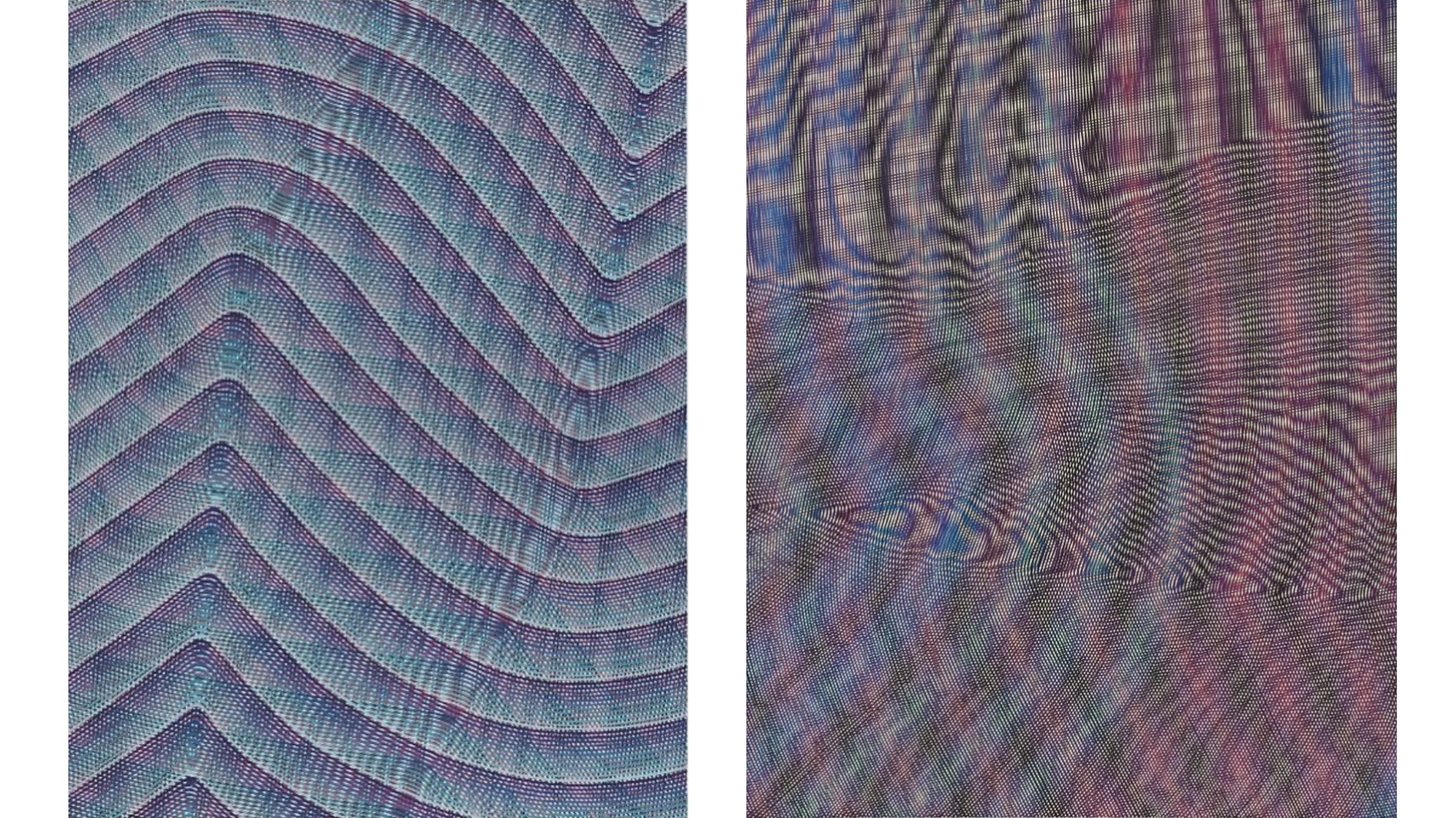 Alexander Puz, Pleasure Centers and Termination Shock (“Vibrant Matters,” Jeffrey Deitch Gallery)
Alexander Puz, Pleasure Centers and Termination Shock (“Vibrant Matters,” Jeffrey Deitch Gallery)
Puz’s work revises the early characterization of Op art as untrustworthy. He trusts in the patterns to reveal the visual phenomena we would not otherwise see. Both Puz and Bass harness Op art to dissect expectations. The result is more treat than trick.
